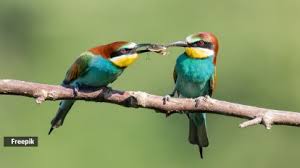For centuries, people have admired the beauty of birdsong, often treating it as background music or instinctive sound. But new findings are challenging that view. Scientists now believe that birds may actually be using structured communication systems—similar in many ways to human speech.
Do Birds Follow Language Rules?
A team of researchers from the University of Manchester and Chester Zoo recently tested whether birdsong reflects the Brevity Law—a linguistic principle stating that frequently used words tend to be short.
By applying a computational tool known as ZLAvian, they studied more than 600 recordings across seven bird species. The results revealed that birds also seem to prefer shorter, more efficient sounds in their communication just as humans use shorter words in daily speech.
“Birds often vary widely in their repertoires, even within the same species,” said Dr Rebecca Lewis, Conservation Scientist at Chester Zoo. “Yet, despite these differences, patterns still appear. That suggests an underlying order in bird communication.”
The Biology Behind Birdsong
It isn’t only behaviour that connects birds and humans. At the University of Texas at Austin, researchers discovered that the syrinx—the organ birds use to produce sound—shares genetic programming with the human larynx. This indicates a surprising evolutionary similarity in how complex vocal systems develop.
Meanwhile, New York University neuroscientists found that birds such as budgerigars can control pitch, timing, and rhythm with specific neurons, much like humans manage speech. This shows that bird communication may involve thought and flexibility rather than simple instinct.
Beyond Parrots: Other Birds Show Complexity
Parrots have long been famous for their ability to mimic human voices. The African Grey parrot “Alex” amazed researchers by naming objects, recognising colours, and even creating new words such as “banerry” for a banana-cherry combination.
But recent studies show that parrots aren’t alone. Crows, ravens, starlings, and songbirds have displayed complex communication skills that suggest they might also understand context not just repeat sounds.
From Myth to Reality
Throughout history, folklore has described humans once being able to understand the “language of birds.” While this idea was long seen as myth, modern research is finding that birdsong may indeed contain structured elements similar to human language.
According to mathematical biologist Dr Tucker Gilman, many of the same genes and brain networks used in human speech are also essential in birdsong. This overlap points toward a shared evolutionary pathway for communication.
Dr Lewis added that ZLAvian could make it easier for scientists to decode these communication systems and even apply the methods to other animals.
Why This Matters
Decoding how birds communicate is more than just a scientific curiosity. It could help conservationists understand how endangered species rely on calls to survive, improving protection strategies. For linguists and evolutionary scientists, it provides valuable insight into the origins of human language and the evolution of communication across species.
Rethinking the Morning Chorus
The dawn chorus, often thought of as nature’s music, may actually be something more: a sophisticated exchange of information between birds. Far from random noise, these songs could represent a coded system of social and survival messages.
The next time you hear birds outside your window, you may be listening not just to a song, but to a conversation happening in code.
SEO Keywords for This Version:
- birds talking in code
- avian communication research
- ZLAvian bird study
- human and bird language connection
- parrots and speech ability
- crow and raven communication
- evolution of birdsong


